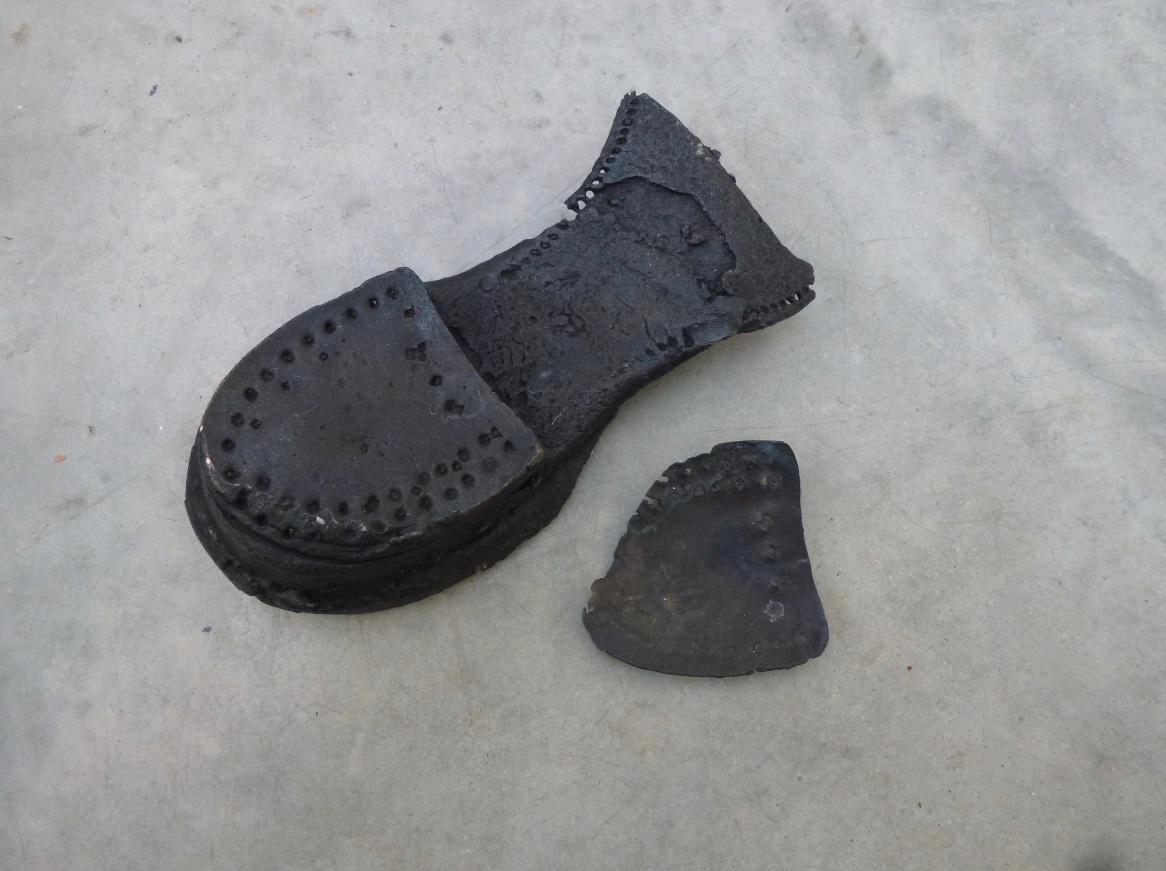


Rachel Whiteread, 'Untitled (Found)', 2016 -® Rachel Whiteread
Before the age of the camera phone and the era of the selfie, the thing visitors to exhibitions used to be criticised for most was the slavish reading of exhibition labels, rather than really looking at the works. With this exhibition, curated by Cornelia Parker RA, it is an unavoidable part of the experience since this is principally an exhibition of stories. The Foundling Hospital was founded in the 18th century by William Hogarth, horrified by the plight of children literally abandoned on the streets of London. Women unable, for whatever reason, to look after their own babies could leave them at the hospital and were encouraged to leave with them some kind of token that would identify the child and prove the connection should they, or a relative ever come to claim the child. These tokens – exhibited in glass cases at the museum, have a tragic pathos; so minimal, poor and makeshift as objects to carry such a freight of emotion. Cornelia Parker has solicited work that responds to these tokens from over 70 artists, and what has flooded back to her are dozens of stories, captured in the exhibition labels and in the catalogue. Often strange, sentimental or autobiographical, reading them becomes compulsive.
Appropriately, the exhibition is a kind of treasure hunt, with works dispersed over four floors of the museum. Mostly small scale, in keeping with the domestic architecture, there are very familiar pieces such as Keith Coventry’s bronze sculpture King and Queen from 1994: his recreation of the severed heads of the sculpture by the same name by Henry Moore that was vandalised in the mid-90s, or Gavin Turk’s Nomadfrom 2002, a painted bronze of a grimy sleeping bag, presumably containing someone forced to sleep rough. And then there are the delightful discoveries by less well known figures like Keggie Carew, who sent a letter he found that was written by his father, Tom, while he was in command of the Trieste Security Office in the Intelligence Corps in 1952. In the letter he talks about sitting at dinner with Patricia Highsmith: “as I thought about it, I couldn’t help wondering would she not have gleaned some interesting titbits for the novel she was working on sitting next to dad? Ripley was a civilised person; he killed reluctantly, only when he had to. Tom Ripley, Tom Carew, both ambidextrous, both sailed small dinghies…and both acquainted with the methods of silent killing…”
Film maker John Smith has also contributed work about his own father, but in a less heroic vein. A short film relates his father’s quirks of thriftiness and DIY skills, all distilled into the stick with which he stirred paints over the years. The stick is also here, sawn in two, the many colours of different rooms in different houses appearing like the growth rings of a tree. A small object, but so telling of the character of the man.
Next to these works that amount to memento mori are quirkier contributions that present objects as talismans, such as Polly Apfelbaum’s Diagram of bones for Madame Duchamp (1987) of which the artist says “I am a very superstitious person. I saw a photo of Teeny Duchamp’s apartment with tons of wishbones on the wall and thought collecting them would be a great way of having a bundle of potential good luck on hand.” Laure Prouvost’s work Stong Sory Vegetables (2010) presents an actual carrot, lemon, tomato and onion on a plinth in front a film of her explaining the powerful religious experience of these objects falling through the ceiling of her room and on to her bed.
Phyllida Barlow’s sculpture Molotov (2015) is a compression of bottles, concrete and offcuts of wood and chicken wire, accompanied by a text that reads like a dialogue in the studio between the artist and an assistant. Other works that emphasise the use of the found object as a part of a more formalist process are Ana Prada’s Primitive Form(1994-2016), and David Batchelor’s Found Monochromes. Christian Marclay’s filmBottle Caps (2016) is a mesmerising miniature.
This is an engrossing and hugely enjoyable show, well suited to these slower days of summer when we can ease the foot off the gas pedal a little.
Caroline Douglas
Director
Foundling Museum, 40 Brunswick Square, London WC1N 1AZ. Tuesday - Saturday, 10:00-17:00, Sunday, 11:00-17:00, Monday closed. Exhibition continues until 4 September 2016. www.foundlingmuseum.org.uk